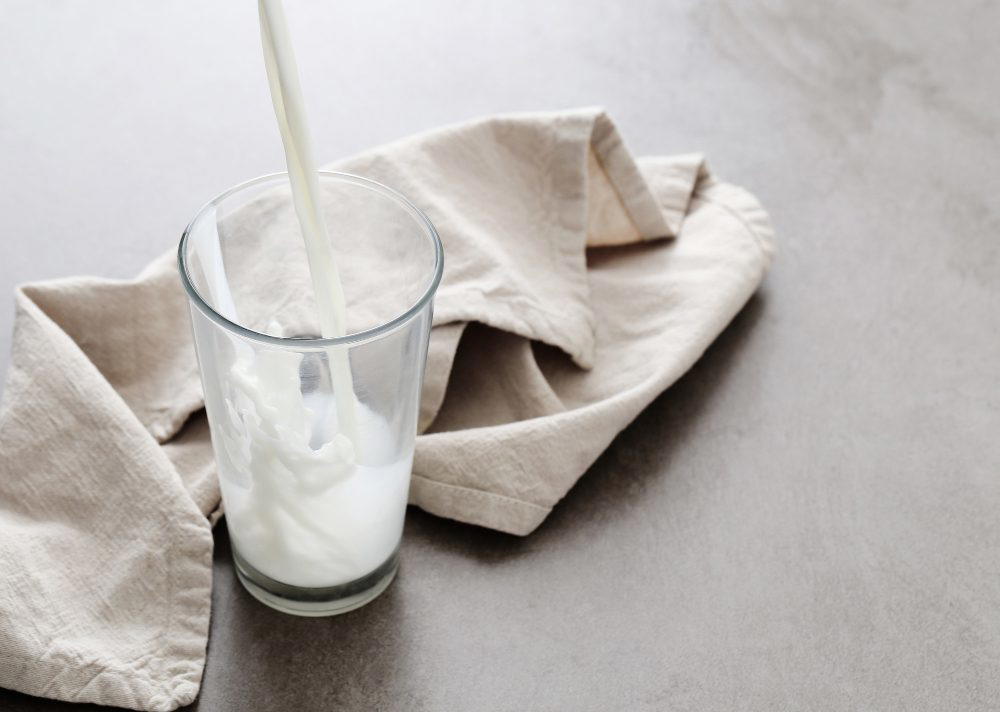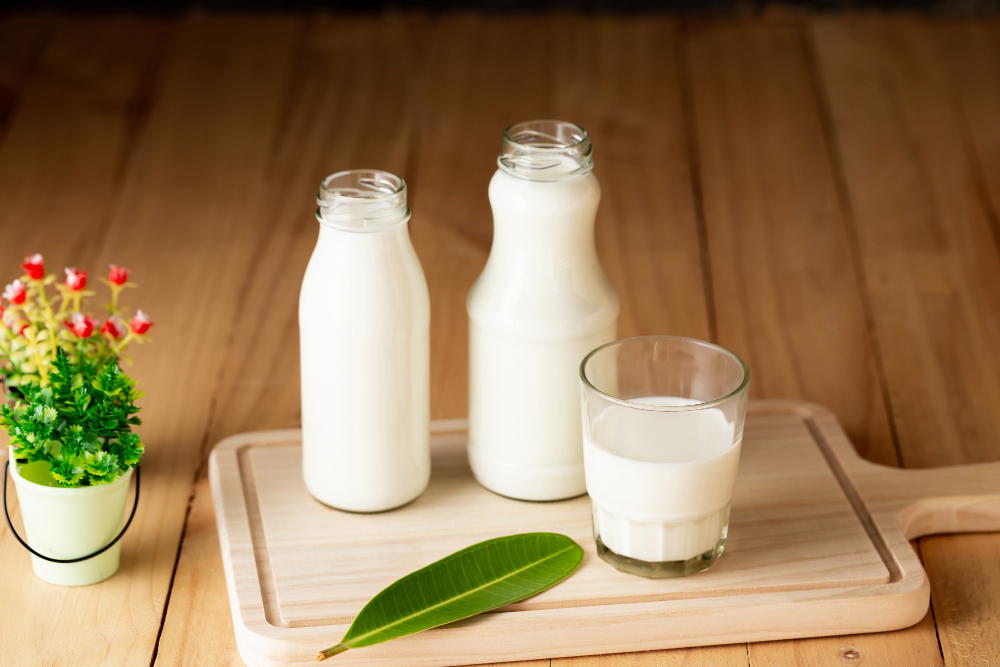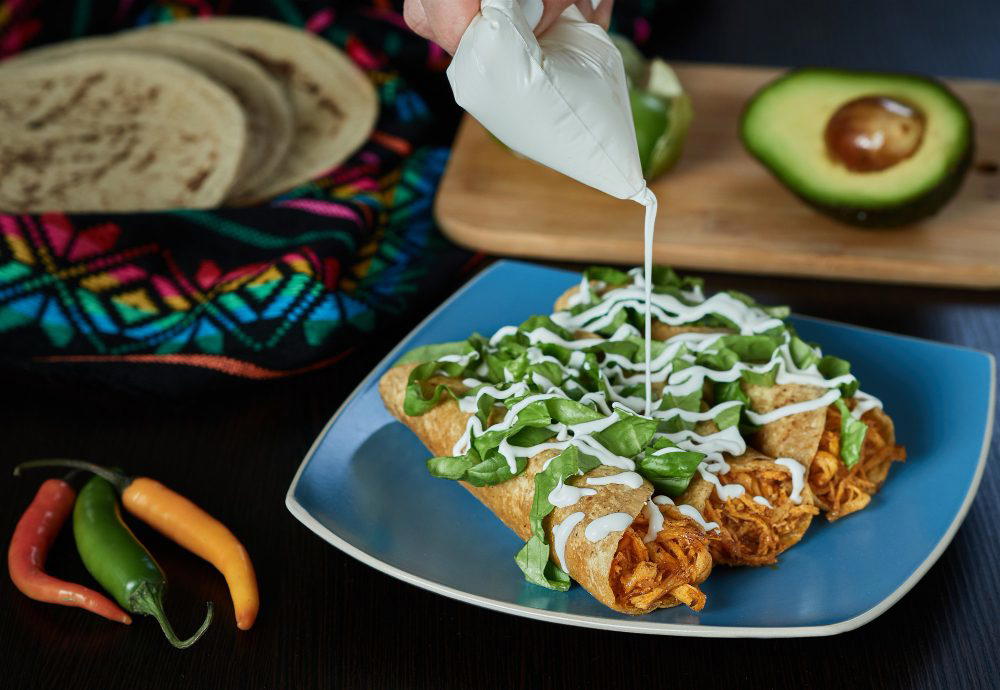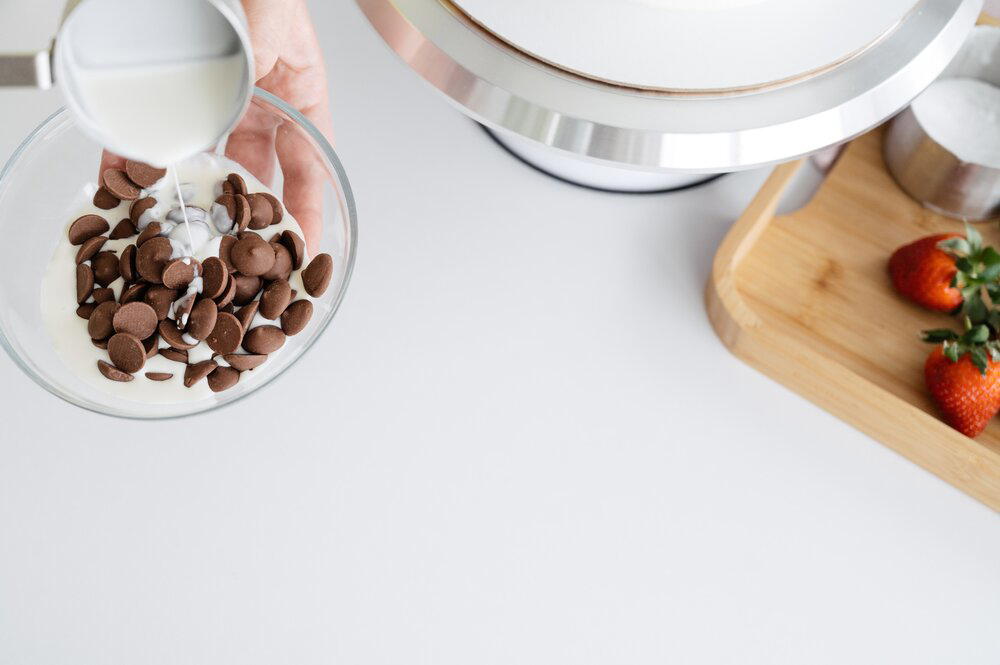
Both buttermilk and heavy cream are staples in various different cuisines. These dairy products add another dimension to the whole flavor profile of a dish. From fluffy buttermilk pancakes to rich Indian butter chicken curry, these ingredients are integral to such mouthwatering foods.
Sometimes you do not have buttermilk in your fridge but you do have heavy cream or vice versa, and you might consider substituting one for the other. Some claim you should never do this, while others say it is perfectly okay if one is unavailable. This article is for you if you are one of those folks who can not decide which theory to believe.
What is Buttermilk?
Traditionally, the rich-tasting, non-fat, and thin liquid left behind after churning butter is buttermilk. This liquid is full of nutrients and beneficial microbial cultures. These microbes add more flavor to the butter as they develop on the cream left behind at room temperature. Before the discovery of refrigeration and easy cooling, buttermilk was kept longer than raw milk as it had an extended shelf life. This made it quite useful and good for cooking.
At present, buttermilk is still considered cultured milk that is similar to other natural cultured dairy products like kefir and yogurt. However, its current preparation method is different from the traditional one. Most dairies now inoculate fresh and pasteurized milk with harmless lactic acid bacteria instead of collecting the by-product of churned butter.
The beneficial bacteria employed are either Lactococcus lactis or Lactobacillus bulgaricus. These bacteria transform the sterilized milk into thick buttermilk. The final product is then packed into cartons or bottles and then dispatched to all the stores.
Despite being creamy, rich, and tasty, traditionally churned buttermilk does not usually contain any fat because all the fat winds up in the butter. Similar to sour cream and yogurt, cultured buttermilk at present ranges from skim to full fat with corresponding calorie content. However, most of the buttermilk we buy from stores is low in fat.
When compared with traditionally cultured buttermilk, store-bought buttermilk has a thicker consistency, tastes more acidic, and is tangier. Hence, it is best to stick to the store-bought buttermilk when preparing a dish that calls for this cultured dairy product.
Opting for commercial buttermilk is recommended as opposed to the homemade ones in baking recipes that rely on precise leavening. To balance the acidity of the store-bought buttermilk and assist in leavening, many recipes include baking soda as well. This helps in achieving a moist and fluffy texture in delicious baked goodies.
Buttermilk tastes sour because lactose present in the milk is fermented by the naturally occurring bacteria. Hence, this cultured milk is often used as a flavoring component in baked goods due to its acidic flavor.
Buttermilk can also be used in marinating and cooking meat as the lactic acid tenderizes the meat. This dairy product contains over 100 calories and slightly more than two grams of fat per cup. Potassium, calcium, phosphorus, and vitamins are all present in small amounts in this liquid.

What is Heavy Cream?
Heavy cream is also sometimes referred to as heavy whipping cream. This cream is great for whipping and is not very light, as the name suggests. Heavy cream is made by leaving milk out for a bit prior to its homogenization. When milk is left for a while, its fat rises to the top. The layer of fat is then skimmed off. The skimmed-off cream is then packaged into sterilized containers while the fat-skimmed milk is packed in bottles, ready for consumption.
Heavy cream contains about 30 to 40 percent fat. This fat content makes baked treats taste so darn good and incredibly delicious. Besides baking, they can also be used in making thick soups, sour cream, homemade butter, whipped cream, sauces, and ice cream. Heavy cream helps in achieving the full-bodied and rich texture in biscuits, cakes, scones, and other baked goodies.
It is also popular as after being whipped, heavy cream holds its fluffy shape the longest. In the world of professional desserts, presentation plays a key role; therefore a cream that keeps its shape on the journey from the kitchen to the table will always be popular with patissiers and chefs.
Buttermilk vs. Heavy Cream: The Differences
Despite being made from the same core ingredient (milk), heavy cream and buttermilk are very different from each other. For easy understanding, here’s a table denoting all the key differences between these two dairy products.
| Buttermilk | Heavy Cream |
| It is basically the liquid left after butter has been churned. At present, it is pasteurized milk cultured by lactic acid bacteria. | It is basically the fat solids separated from the top of unhomogenized milk. |
| It has a tangy and acidic flavor. | It has a slightly sweet and creamy taste. |
| It has a thinner consistency than heavy cream. | It has a thicker consistency than buttermilk. |
| It has a slightly yellow appearance. | Its color is always white. |
| It has a significantly lower fat content than heavy cream. | It has higher fat content than buttermilk. |
| It contains fewer calories than heavy cream. | It contains more calories than heavy cream. |
| It contains more sodium than heavy cream (105mg sodium per 100g of buttermilk). | It contains less sodium than buttermilk (44mg sodium per 100g of heavy cream). |
| It is typically used as a leavening agent, flavoring agent, or marinade. | It is typically used as an ingredient in sauces, soups, baking, and making ice cream. |
| It does not hold any shape after being whipped. | It holds shape for a long time after being whipped. |
| It reacts with baking soda, making the baked good fluffier. | It does not react with baking soda and does not typically leaven the baked product. |
Can Buttermilk Be Substituted for Heavy Cream?
In some situations, you can use buttermilk instead of heavy cream. However, there are recipes that call for specific qualities which the substitute does not have. To help you determine whether you can substitute the buttermilk with heavy cream or vice versa, consider the following factors:
- Buttermilk cannot be whipped
If the recipe calls for the heavy cream to be whipped, then you cannot certainly use buttermilk. Buttermilk does not have sufficient fat content to be whipped and cannot hold any shape.
- Heavy cream does not react with baking soda
Buttermilk has acidic properties which let them react with baking soda. This reaction causes the food to rise and obtain a fluffy texture. This plays a key role when baking cakes and other confections, making it mandatory to use leavening agents like buttermilk and baking soda. A cake that has not risen is literally a flop and is not desired. Hence, heavy cream as a buttermilk substitute is not ideal in recipes that rely on buttermilk for the leavening process.
- Buttermilk has a lower fat content
A recipe might call for heavy cream for its 30 to 40 percent fat content to achieve a rich and thick consistency. In such recipes, using buttermilk as a heavy cream substitute will not be ideal as it is simply too light to do the job successfully.
- Buttermilk has a sour and acidic taste
Due to the unique and distinct sour taste of the buttermilk, sometimes the baker uses it to add more depth to the dish’s flavor profile. This is particularly true in baking scones and biscuits. Heavy cream is not likely to be perfect for the task since it lacks sourness.
Basically both heavy cream and buttermilk have distinct textures and flavors. Just follow the basic rule of thumb that buttermilk is light and makes food fluffy, whereas heavy cream is much thicker and usually used to make the sauce or food thicker. If a recipe calls for either of these qualities, it is very likely that swapping them will not work.
When Do You Need Buttermilk?
You need buttermilk when the recipe calls for it as a leavening agent to make baked products like cakes and pancakes to be fluffy. They are usually paired with baking soda as they react together which causes the food to rise. They play a key role in making the food airy, light, soft, and fluffy. Buttermilk is also used to add more flavor to the dish due to its tangy taste.
When Do You Need Heavy Cream?
You need heavy cream in dishes to achieve a rich creamy texture as they have a high-fat content. This is why most recipes of hearty soups and heavy sauces call for the use of heavy cream. When you are making whipped cream, using heavy cream is the best way to go. Whipped cream tastes amazing and also looks quite pretty. You can not make whipped cream with buttermilk as it does not have the necessary amounts of fat.

Can I Use Heavy Cream Instead of Buttermilk in Baking?
As long as you are not using them for the above-mentioned purpose, it will not be a problem to substitute one for the other. It might require some baking or culinary skills, but you do not have to be a Martha Stewart to pull it off.
Your heavy cream will struggle to fulfill two crucial aspects of buttermilk. The first is the characteristic sour taste of the buttermilk. Depending on the recipe, you might be able to substitute heavy cream with a splash of vinegar or lemon juice.
The second is the leavening function of the buttermilk. Since heavy cream does not react with baking soda, it does not make the bread, cakes, or other baked goods rise. If you are substituting buttermilk with heavy cream to leaven the baked goodie, replacing baking soda with baking powder will do the trick.
You need to bear in mind that traditional buttermilk is quite different from store-bought or commercial ones. If you want to make traditional buttermilk, you can use milk, cream, and add some lemon juice or vinegar to make your own buttermilk at home.
How to Make Buttermilk from Heavy Cream Milk?
Making your own buttermilk at home is actually quite easy. All you need is some time and two ingredients. Simply mix two tablespoons of white distilled vinegar into one cup of heavy cream milk. You can also use half and half or skimmed milk, but it is best to opt for full-fat milk if you want the buttermilk to be thick like the store-bought kind.
After adding the vinegar, wait for a few minutes for the milk to curdle. Do not get worried about the milk starting to curdle. The curdling will help you obtain the thick consistency and the distinct tangy flavor of the buttermilk. Just allow the lemon juice or vinegar to do its magic by simply letting the milk sit.
If you do not have vinegar, you can use two tablespoons of lemon juice instead. To make sure your buttermilk is thick like the commercial ones, it is best to use milk at room temperature. If the buttermilk you made is not thick enough, let the milk and vinegar mixture sit for a longer time. Alternatively, you can also heat the milk for about 15 seconds in the microwave.
Wrapping up
In certain recipes, buttermilk and heavy cream play some similar roles, yet they are very different from each other. The buttermilk available in supermarkets is made by adding lactic acid to milk, achieving a distinct tangy flavor.
It is used by aspiring bakers to elevate the flavors and help bread, cakes, and other baked goods to rise to give them an airy and light texture. Some marinades also include buttermilk as it can make the meat tender effectively.
Fat is skimmed from unhomogenized milk to make heavy cream. It is thick and can be properly whipped as it contains 30 – 40 % fat. It adds a sweet creaminess to food. It is mostly used in making frosting, thick soups, sauces, sweet confections, ice cream, and many more.
They cannot be used interchangeably. It is possible to substitute buttermilk for heavy cream/heavy cream for buttermilk in a recipe, but it might require some tweaking. For instance, if you are substituting buttermilk with heavy cream in baking a fluffy cake, for example, you will need to use baking powder instead of baking soda.
